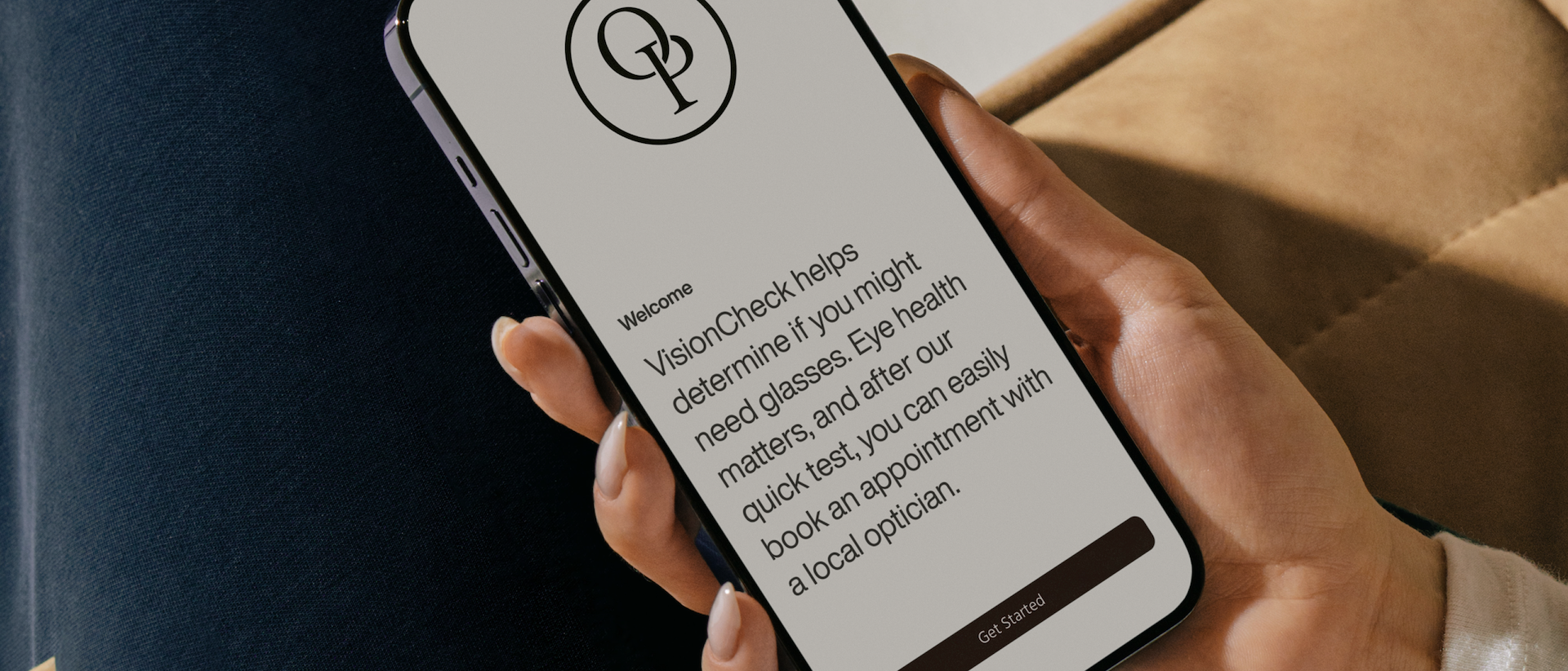Unlocking the next generation of optical patients: why clinics should partner with VisionCheck
Today’s young adults are far less likely than older generations to proactively book an eye exam, not because they’re avoiding care, but because they don’t realise they need it. That’s where VisionCheck comes in.
VisionCheck engages people before they even think about vision care. With a simple 2-minute test on their phone,
we raise awareness of potential vision issues and guide them to book an appointment at a local clinic.
We’re now inviting select clinics to become exclusive referral partners by region. If you want to grow your practice with a younger, digitally native audience, this is your moment.
Why are younger generations the missing link in optical care
They don’t know they need help
Many young adults associate blurry vision or eye strain with screen fatigue, not with refractive error. In global surveys, “I didn’t realise I had a problem” is one of the most cited reasons for not seeking eye care, particularly among people aged 18–35.
Their vision may be impaired without symptoms
Population studies show that up to 25% of young adults without glasses have a refractive error that has gone undetected. This group simply hasn’t had enough symptoms to trigger action, yet.
Vision can change throughout young adulthood
Refractive changes often continue into the early twenties. Many in this group have never had a proper exam, or haven’t had one since childhood.
VisionCheck reaches users upstream, before they search
Traditional eye care marketing reaches people at the bottom of the funnel, when they’re already aware of a problem. However, that overlooks millions of younger adults who are unaware of their need for help.
VisionCheck reaches them upstream. Through mobile content, social media, and digital awareness campaigns, we invite users to take a 2-minute AI-powered screening using their phone. If the result suggests possible nearsightedness or farsightedness, they are encouraged to book an eye test with a local clinic.
But we don’t stop there. Even when the result is neutral, we ask triage questions, such as “Do you experience tired eyes or headaches?” and advise every user to book an eye test anyway, because regular eye examinations are essential, regardless of whether symptoms are present.
A success-based model: no financial risk, no upfront cost
We’re building VisionCheck to be a zero-risk growth channel for clinics. That means:
• No upfront investment
• No subscription
• No campaign management on your end
Instead, our business model is success-based. You only pay when value is delivered, upon booking made through one of your clinics. We take on the cost and complexity of reaching users, screening, triaging, and converting.
What you get by partnering with VisionCheck
New patient acquisition: Reach an audience that traditional channels miss: younger, uncorrected, and unaware.
High-intent traffic: Users are actively engaging in a vision check; they’re primed to take the next step.
Fully managed by us: We handle user outreach, education, screening, triage, and the booking funnel.
No operational burden: You only need to approve a simple booking integration; we handle the work.
Exclusive regional rights: We work with only one partner per region to protect your competitive advantage and make booking easy for our users.

Estimated scale of opportunity: millions of undiagnosed young adults
While data vary, epidemiological studies suggest the potential is enormous.
In Europe, rates of myopia in younger adults (e.g. ages 25–29) exceed 47% in some samples, and over half of European adults have some refractive error. More conservative meta-analyses estimate that ~10% of adults in some populations carry uncorrected refractive error (URE) (i.e. refractive need not yet addressed). 
Translating to scale: even if just 5–10% of younger adults in major European markets currently live with undiagnosed refractive errors, that implies millions of potential patients, a ready but untapped audience. In Canada, although the data is less granular, refractive error accounts for a significant share of visual impairment and correction gaps. 
This is precisely the cohort VisionCheck targets: young, undiagnosed, and unaware of their vision needs.
Clinically validated accuracy and performance
VisionCheck has been technically validated as a reliable screening tool for refractive errors, with results meeting the standards required for high-throughput, real-world triage.
- 94% accuracy when used on recommended devices, with zero cross-class errors (i.e., no myopia classified as hyperopia or vice versa)
- All uncertain results are flagged as inconclusive rather than misclassified
- 99.9% prediction uptime and robust filtering of low-quality data ensure stable, high-quality user results
VisionCheck applies established optical principles (similar to autorefractors) and enhances them using machine learning. By analysing patterns in the eyes, it determines the eye’s refractive behaviour, enabling accurate, non-invasive estimates of myopia and hyperopia.
Why now?
- Refractive error is rising globally, especially among screen-heavy populations
- Young adults are underdiagnosed and undertested, but digitally reachable
- Early adopters of upstream digital triage will lead in attracting the next generation of patients
Let’s talk. Your region might still be open
VisionCheck is now onboarding one exclusive referral partner per region. If you’re a clinic or optical chain looking to future-proof your growth while contributing to improved population eye health, we’d love to hear from you.
Interested? Let’s talk
Sources:
https://www.iapb.org/learn/resources/prevalence-of-refractive-error-in-europe
https://www.canadianjournalofophthalmology.ca/article/S0008-4182%2817%2931135-3/fulltext
https://europep
mc.org/article/pmc/pmc6498913
https://www.ncbi.nlm.nih.gov/pmc/articles/PMC3312764/
https://pmc.ncbi.nlm.nih.gov/articles/PMC2941200/


